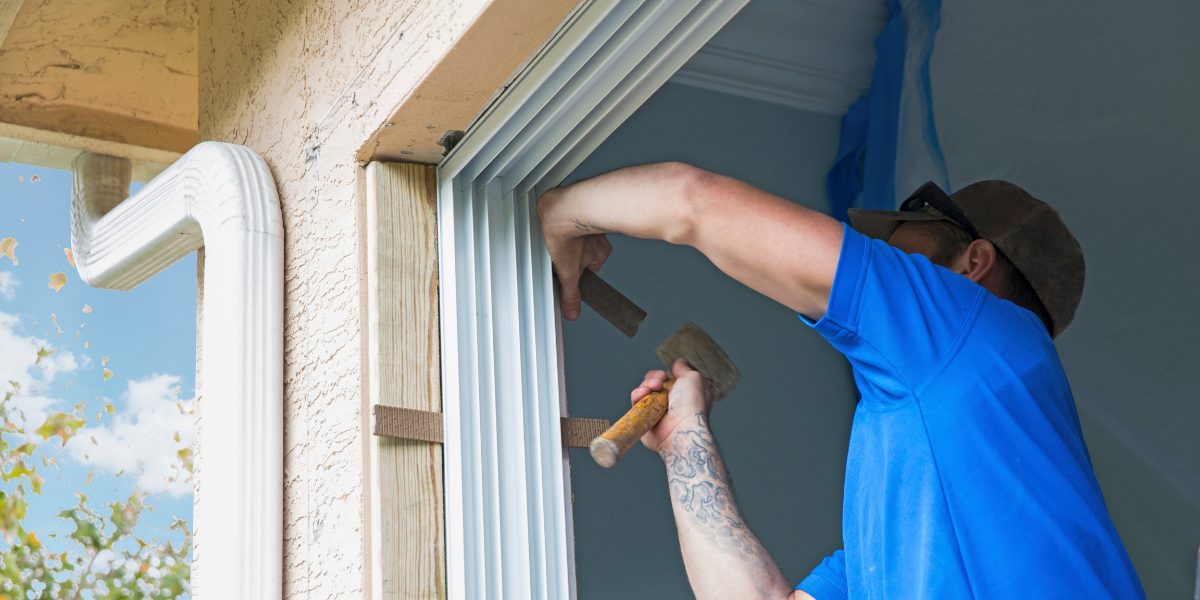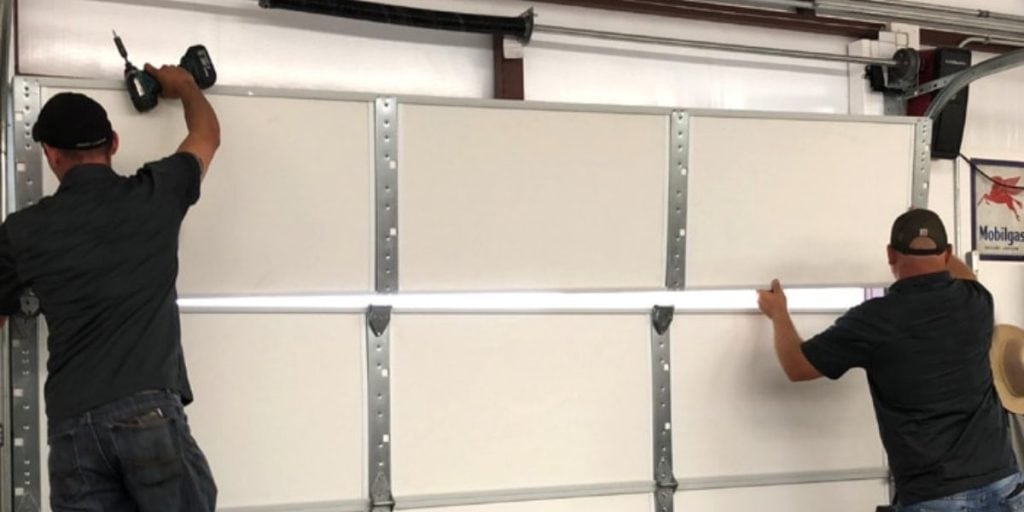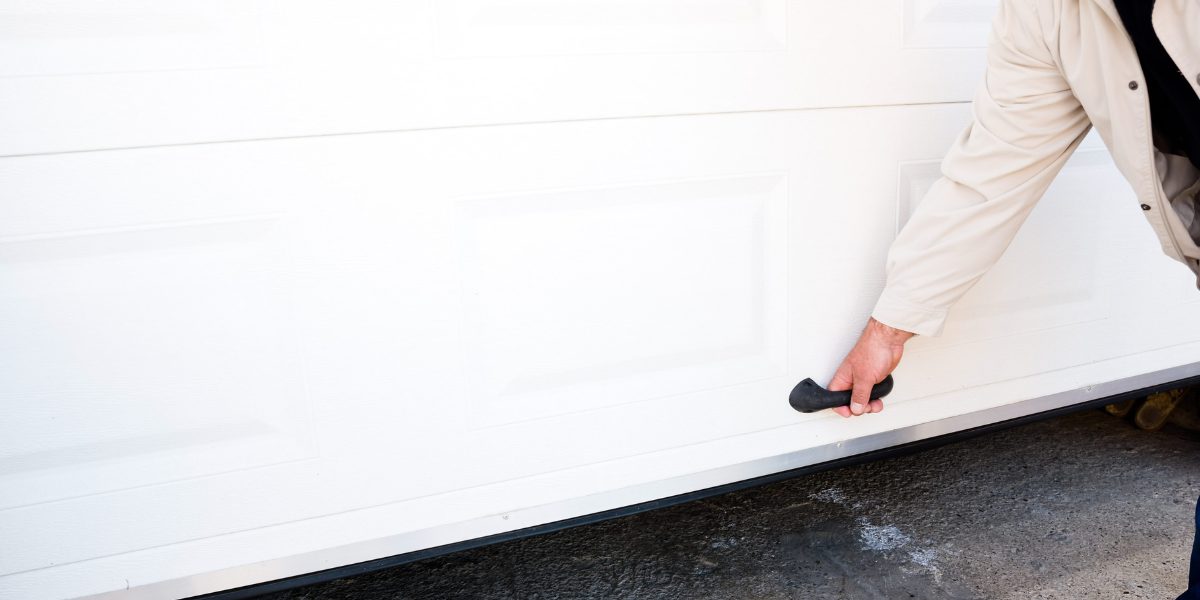Know the Risks: Understanding the Dangers of DIY Garage Door Replacement
Garage doors are an essential part of any home, providing security and convenience for homeowners. Over time, these doors may require maintenance or repairs due to wear and tear, weather exposure, or other factors. When faced with such issues, homeowners often consider do-it-yourself (DIY) projects as a cost-saving measure. DIY projects, including garage door repairs and replacements, have gained immense appeal among homeowners due to the satisfaction of completing a task on their own and the potential to save money on professional services. However, it’s crucial to understand that garage doors are not simple components and come with complexities and weight that demand careful consideration and safety precautions.
DIY projects have always been popular due to several reasons. First and foremost, they allow homeowners to take control of their home maintenance and repair needs, giving a sense of accomplishment and self-sufficiency. DIY enthusiasts often enjoy the challenge of learning new skills and problem-solving while working on these projects. Additionally, DIY projects can save money that would otherwise be spent on hiring professionals, which is an attractive prospect for budget-conscious individuals.
Understanding the Complexity of Garage Doors
A typical garage door system consists of several components that work together to ensure smooth and reliable operation. Understanding these components is crucial for comprehending the complexity of garage doors. The main parts of a garage door system include:
- Garage Door Panels: These are the large, flat sections that make up the main body of the door. Garage door panels can be made from various materials, such as steel, wood, aluminum, or fiberglass.
- Rollers: Rollers are small wheels attached to the sides of the door panels, allowing them to slide up and down along the metal tracks. The rollers help reduce friction and enable smooth movement.
- Tracks: Garage door tracks are horizontal or vertical metal rails that guide the movement of the door. They keep the door aligned and prevent it from swinging outwards during operation.
- Hinges: Hinges are the joints that connect individual garage door panels. They allow the door to bend as it moves along the tracks.
- Garage Door Opener: The garage door opener is an electric motorized device that automates the opening and closing of the garage door. It is controlled using a remote, wall-mounted switch, or smartphone app.
- Sensors and Safety Features: Modern garage doors come equipped with safety sensors to prevent accidents and damage. These sensors can detect obstructions in the door’s path, causing it to reverse if something is detected.
Balancing and counterweight mechanisms:
Garage doors are typically heavy and bulky, making them difficult to lift manually. To counterbalance the weight of the door and make it easier to open and close, garage door systems use balancing and counterweight mechanisms. These mechanisms are usually found in overhead garage doors.
The counterweight system employs a torsion spring (discussed in the next section) mounted on a torsion shaft. When the garage door is closed, the spring is under tension, storing energy. As you manually or automatically open the door, the stored energy in the spring assists in lifting the door. When the door is in the open position, the tension in the spring balances the weight of the door, making it feel lighter and easier to handle.
Torsion and extension springs:
Torsion Springs: Torsion springs are one of the most critical components of a garage door system. These springs are usually mounted horizontally above the garage door opening, parallel to the door. They are designed to store mechanical energy when twisted.
When the garage door is closed, the torsion springs are wound tightly, storing energy. As you begin to open the door, the stored energy is released, helping lift the door. When the door is fully open, the springs are at their maximum torque, providing the necessary counterbalance.
Extension Springs: Extension springs are another type of spring used in garage door systems, especially in older models. These springs are typically mounted above the horizontal tracks on both sides of the door. Unlike torsion springs, extension springs stretch and contract as the door opens and closes.
When the garage door is closed, the extension springs are extended. As the door is raised, the springs contract, storing energy that assists in lifting the door. Extension springs work in a similar balancing manner as torsion springs but have a different configuration.
High-tension cables and pulleys:
High-tension cables and pulleys play a crucial role in garage door safety. They are used as a backup mechanism to support the weight of the door in case the springs fail. These components are typically attached to the bottom corners of the garage door and run through the spring system.
If a spring were to break or malfunction, the high-tension cables are designed to hold the door panels in place, preventing the door from crashing down suddenly. This enhances the safety of the garage door system, protecting both property and individuals from potential accidents.
In conclusion, garage doors are complex systems that involve multiple components working in tandem to ensure smooth and safe operation. Understanding these components, such as the garage door panels, rollers, tracks, hinges, garage door opener, sensors, and the intricate balancing mechanisms using torsion and extension springs, provides valuable insights into the overall functionality and safety measures of garage doors.

Risk of serious injuries and accidents:
- Garage door falling during installation: One of the most significant dangers of DIY garage door replacement is the risk of the garage door falling during the installation process. Garage doors are heavy and can weigh several hundred pounds, depending on the material and size. If not properly secured during installation, they can suddenly drop, causing severe injuries to anyone in the vicinity.
- Mishandling of heavy components: DIY garage door replacement requires dealing with heavy and cumbersome components like the door panels, tracks, and motor units. Improper handling of these components can lead to muscle strains, back injuries, or even crushed fingers and hands.
- Accidents involving springs and cables: Garage doors operate using torsion springs or extension springs, which are under high tension. Mishandling or improperly adjusting these springs can lead to them snapping or releasing suddenly, causing severe injuries or even death. Similarly, mishandling cables can result in them becoming loose or snapping, posing a significant risk to anyone nearby.
Lack of knowledge and expertise:
- Proper installation techniques: Garage door replacement requires specific techniques for dismantling the old door, assembling the new one, and ensuring it is properly balanced and aligned. Without the necessary knowledge and experience, it is easy to make mistakes that can compromise the door’s functionality and safety.
- Safety precautions and protocols: Professional garage door installers are trained to follow safety protocols and use specialized tools and equipment to minimize risks during installation. DIYers may lack the understanding of these safety measures, increasing the likelihood of accidents and injuries.
- Understanding garage door mechanics: Garage doors are complex systems with numerous moving parts, such as pulleys, tracks, and hinges. A lack of understanding of how these components work together can result in improper installation, leading to malfunctions and potential safety hazards.
Incorrect measurements and adjustments:
- Impact on door functionality and balance: Precision is crucial when installing a garage door. Incorrect measurements or adjustments can lead to an unbalanced door, causing it to jam, operate noisily, or not close properly. An unbalanced door can also put extra strain on the garage door opener, leading to premature wear and tear.
- Potential damage to property and vehicles: If the garage door is not installed correctly, it may not close properly or may scrape against the sides of the opening. This can result in damage to the door itself, the surrounding walls, or even vehicles parked inside the garage.
Importance of Professional Garage Door Installation
Ensuring safety for you and your family:
One of the most crucial reasons for opting for professional garage door installation is ensuring the safety of you and your family. Garage doors are heavy and complex mechanisms that can pose serious risks if not installed correctly. A poorly installed garage door can malfunction, leading to accidents or injuries. These doors have various moving parts and tension-loaded components, such as springs and cables, which can be hazardous if mishandled.
Professional garage door installers are trained to handle these potential dangers and ensure that the installation is done following strict safety guidelines. They understand the correct procedures for handling heavy doors and have the expertise to properly balance the door, adjust the tension on springs, and ensure all safety features like sensors and auto-reverse mechanisms are functioning correctly. By hiring professionals, you significantly reduce the risk of accidents and create a safer environment for your family.
Proper tools and equipment for installation:
Garage door installation requires specialized tools and equipment to be done efficiently and accurately. Professional installers come equipped with the necessary tools, which are often expensive and not commonly found in households. They have access to professional-grade hardware, drills, levels, torque wrenches, and more, which are vital for achieving precise and secure installations.
Using improper tools or attempting a DIY installation with inadequate equipment can lead to mistakes and compromised performance of the garage door. Additionally, incorrect installations may cause premature wear and tear on parts, reducing the lifespan of the door and leading to costly repairs down the line. With professional installation, you can have peace of mind knowing that the appropriate tools and techniques are employed to set up your garage door properly.
Expertise and experience of trained technicians:
Professional garage door installers possess extensive knowledge and experience in handling various types of garage doors. They stay up-to-date with the latest industry practices and manufacturer guidelines, allowing them to install a wide range of garage doors correctly. Whether it’s a traditional overhead door, a sectional door, or a modern smart garage door, professionals have the expertise to handle the nuances of each system.
Their experience also allows them to troubleshoot potential issues that may arise during the installation process swiftly. They can identify and address problems before they become major concerns, saving you time, money, and frustration. By hiring professionals, you benefit from their skills and knowledge, resulting in a more efficient and reliable garage door installation.
Warranties and guarantees on workmanship:
Reputable garage door installation companies often provide warranties and guarantees on their workmanship. This means that if any issues arise due to faulty installation or workmanship within a specified period (typically one year), they will rectify the problem at no additional cost to you. This assurance not only protects your investment but also provides you with added confidence in the quality of the installation.
On the other hand, attempting a DIY installation or hiring an inexperienced contractor might not offer the same level of protection. If problems arise later on, you may have to bear the expense of repairs or even a complete reinstallation.
Tips for Safe Garage Door Maintenance and Repairs
Performing Visual Inspections Regularly
Regular visual inspections of your garage door are essential for identifying any potential issues before they escalate into significant problems. Here are some tips on what to look for during these inspections:
- Check for Signs of Wear and Tear: Look for any signs of wear on the garage door itself, such as cracks, dents, or rust. Additionally, examine the tracks and rollers for signs of damage.
- Test the Balance: Disconnect the garage door opener and manually open the door halfway. If it stays in place, it’s properly balanced. If it starts to fall or rise, the springs might be misaligned, and you should call a professional for adjustment.
- Inspect the Cables and Springs: Check the cables and springs for signs of fraying, rust, or damage. These components are under high tension and should only be handled by trained technicians.
- Test the Auto-Reverse Safety Feature: Place an object, like a piece of wood, in the path of the closing door. The garage door should automatically reverse upon contact. If it doesn’t, the safety feature might be malfunctioning, and you should address this immediately.
- Listen for Unusual Noises: Pay attention to any grinding, scraping, or unusual noises while operating the garage door. Unusual sounds may indicate problems with the opener, tracks, or other components.
Lubrication and Minor Maintenance Tasks
Regular maintenance tasks can help prolong the life of your garage door and ensure it operates smoothly. Here’s what you can do:
- Lubrication: Apply a silicone-based lubricant to the moving parts of the garage door, such as hinges, rollers, springs, and tracks. Lubrication reduces friction, minimizes wear, and helps the door operate quietly.
- Tighten Hardware: Check and tighten all the nuts, bolts, and screws holding the various components of the garage door together. Vibration and regular use can loosen these fasteners over time.
- Keep Tracks Clean: Ensure the tracks are free of debris, dirt, and any obstructions that could interfere with the door’s movement.
- Replace Weatherstripping: If the weatherstripping at the bottom of the garage door is cracked or damaged, replace it to keep out drafts, moisture, and pests.
Knowing When to Call a Professional
While some maintenance tasks can be done by homeowners, there are certain issues that require professional expertise. Contact a qualified garage door technician under the following circumstances:
- Spring and Cable Repairs: Garage door springs and cables are under high tension and can be dangerous to handle without proper training and tools.
- Opener Issues: If the garage door opener is malfunctioning, making strange noises, or not responding properly, it’s best to have a professional diagnose and fix the problem.
- Track Misalignment: If the garage door jumps off the tracks or appears misaligned, attempting to fix it without proper knowledge can lead to further damage.
- Panel Replacements: Damaged garage door panels should be replaced by a professional to ensure proper alignment and function.
Importance of a Regular Garage Door Tune-Up
Regular tune-ups by a professional garage door technician are crucial for maintaining the safety and efficiency of your garage door system. Here’s why it’s essential:
- Safety: A garage door that isn’t functioning correctly can pose serious safety hazards to you and your family. A professional tune-up ensures that all safety features are working correctly and that potential risks are identified and addressed.
- Preventive Maintenance: Regular tune-ups help identify minor issues before they turn into major problems, saving you from costly repairs down the line.
- Prolonged Lifespan: Proper maintenance and regular inspections can extend the lifespan of your garage door and its components.
- Smooth Operation: A well-maintained garage door operates smoothly and quietly, avoiding unnecessary noise and inconvenience.
- Warranty Requirements: Some garage door manufacturers require regular professional maintenance to keep the warranty valid. A regular tune-up ensures you comply with these requirements.
Frequently Asked Question
Can I replace my garage door on my own?
While it’s technically possible to replace a garage door yourself, we strongly advise against it. DIY garage door replacement can be dangerous for several reasons.
What qualifications do professionals have that make them better suited for the job?
Garage door professionals have the necessary training, expertise, and tools to safely replace garage doors. They understand the various mechanisms, components, and safety precautions required to ensure a successful installation. Moreover, they are familiar with local building codes and regulations, ensuring compliance and safety.
Can’t I save money by doing it myself?
While DIY projects can save money in some cases, garage door replacement is not one of them. The potential costs associated with fixing mistakes, medical bills from injuries, or damages to your property can quickly outweigh any savings you might have initially hoped for.
What should I do instead of attempting a DIY garage door replacement?
It’s best to hire a professional garage door installation company. They will have the experience, knowledge, and tools needed to ensure a safe and successful installation. Additionally, they can advise you on the best garage door options that suit your needs and budget.
Conclusion
In conclusion, DIY garage door replacement is not worth the potential risks and dangers it poses. The safety of yourself, your family, and your property should be the top priority. It’s essential to leave garage door installations and repairs to experienced professionals who have the necessary knowledge and tools to get the job done safely and efficiently. By hiring a reputable garage door company, you can have peace of mind knowing that your garage door will function correctly, comply with safety standards, and protect your loved ones and possessions.


